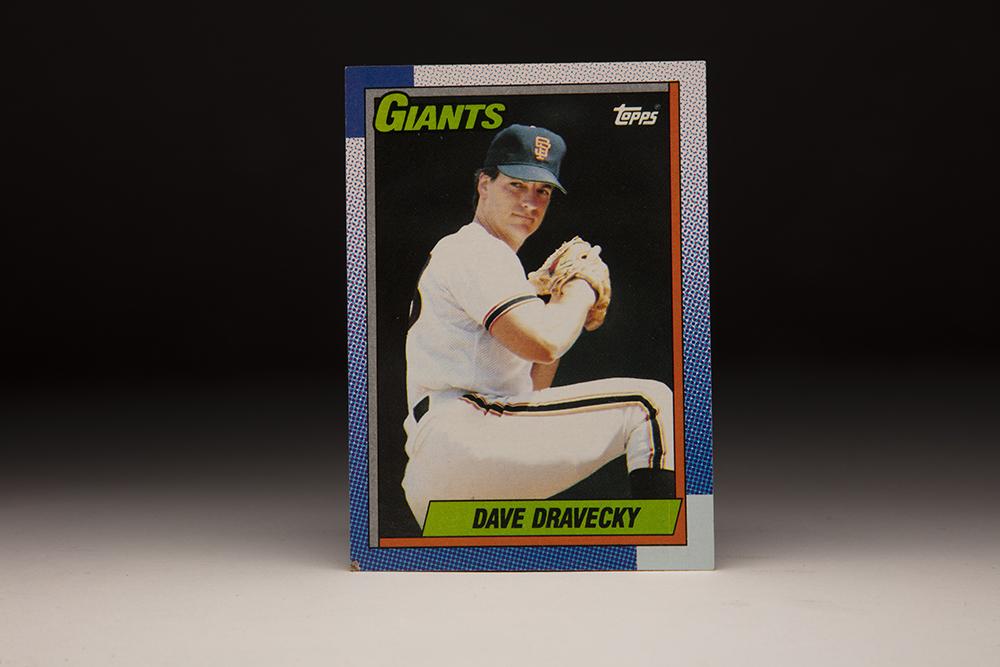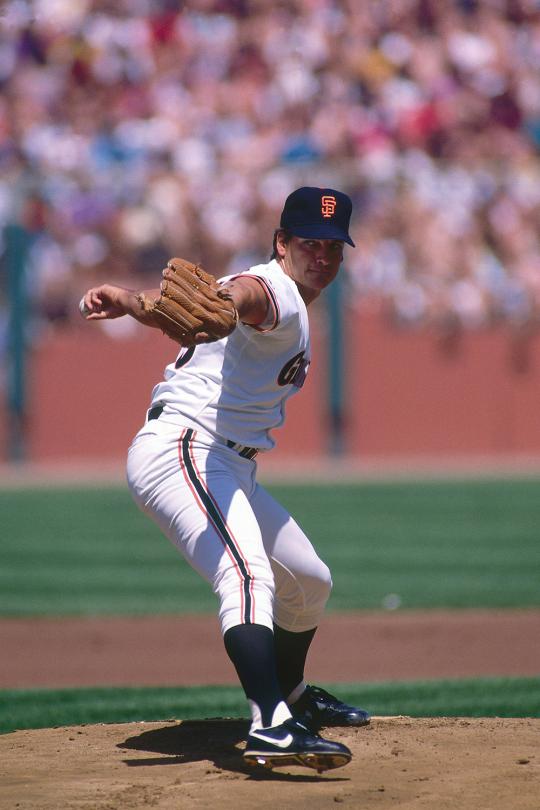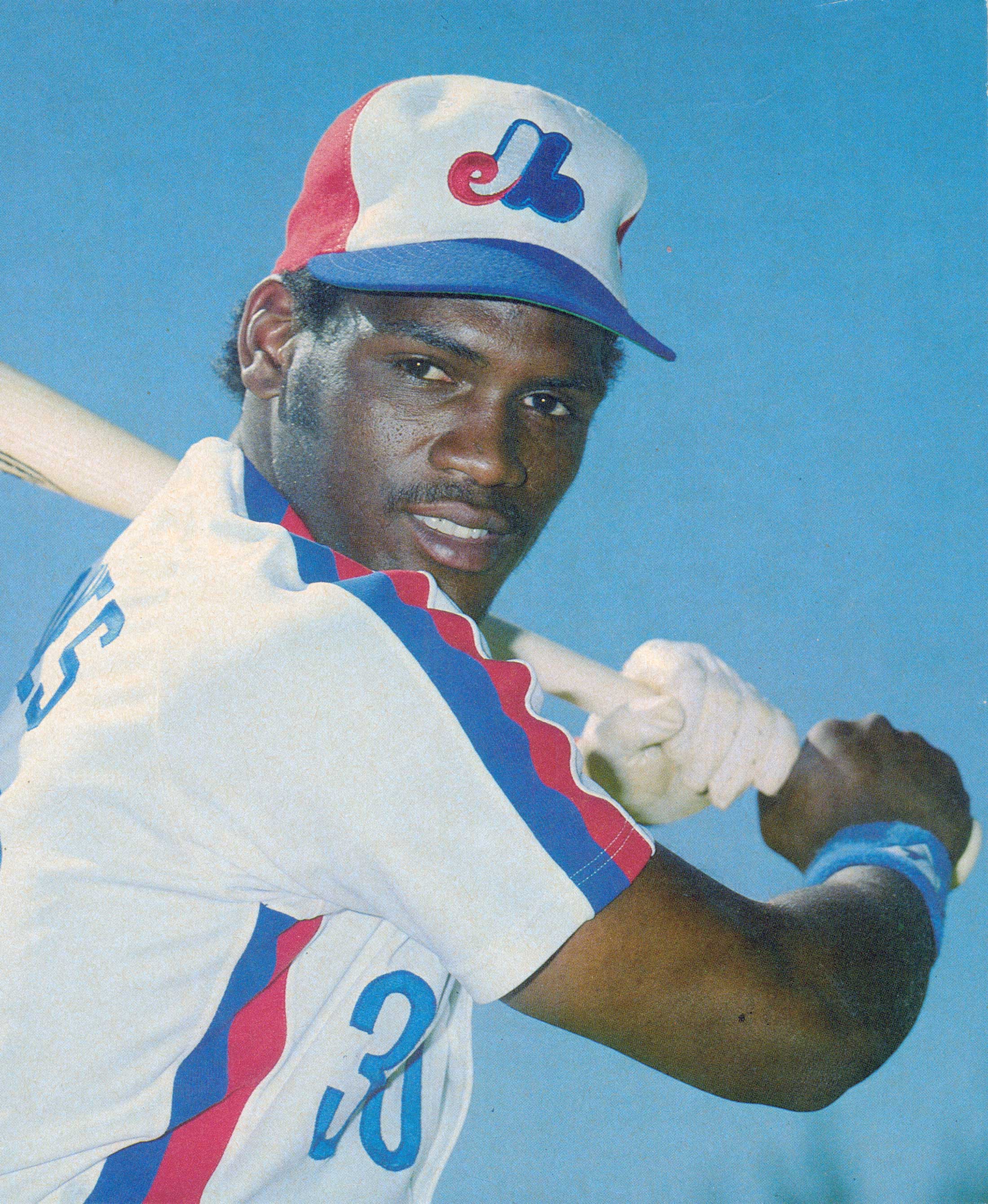- Home
- Our Stories
- #CardCorner: 1990 Topps Dave Dravecky
#CardCorner: 1990 Topps Dave Dravecky
On Aug. 15, 1989, Dave Dravecky was as celebrated as any player in baseball – having returned from a battle with cancer to pitch once again in the major leagues.
That night in Montreal, while making his 66th pitch of the game for the San Francisco Giants, Dravecky’s left arm snapped. The sound echoed off the walls at Olympic Stadium as teammates rushed to help Dravecky, who collapsed to the turf in agony.
Taken off the field on a stretcher, Dravecky would never pitch again and would eventually lose his arm to amputation.
But Dave Dravecky won that game. And in the end, Dravecky won much more – including the respect of millions of fans.
Born on Valentine’s Day 1956 in Youngstown, Ohio, Dravecky grew up in a high school football hotbed but found his passion in baseball. He began to pitch once he got to Boardman High School and enrolled at Youngstown State University after going undrafted following his high school graduation.
Be A Part of Something Greater
There are a few ways our supporters stay involved, from membership and mission support to golf and donor experiences. The greatest moments in baseball history can’t be preserved without your help. Join us today.
At YSU, Dravecky became successful by changing speeds and hitting spots – and helped the Penguins advance to the Division II playoffs as a junior in 1977. There – against Wright State University – Dravecky was humbled.
“I was 7-1 with an earned-run average of 0.88,” Dravecky told the Dayton Daily News. “We got beat 25-1, and I got smoked.”
The Wright State players let Dravecky have it, yelling out his recalculated ERA every time a run scored.
But Dravecky was undeterred and had success again as a senior, finishing his career with a 21-7 record and new school standard of 252 strikeouts. He attended a Reds tryout camp in Cleveland – “My control was awful,” Dravecky said – and eventually worked out for the Pirates at Three Rivers Stadium.
Pittsburgh selected Dravecky in the 21st round of the 1978 MLB Draft.
“I felt fortunate to be signed at all because the exposure at Youngstown State isn’t all that great,” Dravecky said.
The Pirates sent Dravecky to Class A Charleston of the Western Carolinas League, where he was 4-2 with a 4.15 ERA in 20 games. He pitched for Double-A Buffalo of the Eastern League in 1979, going 6-7 with a 4.26 ERA in a home park – War Memorial Stadium – known for its short right field dimensions. He then returned to Buffalo in 1980, this time going 13-7 with a 3.35 ERA but striking out only 64 batters in 161 innings.
That performance earned him an invitation to Spring Training in 1981, and Dravecky worked with Pirates pitching coach – and longtime big league lefty – Harvey Haddix toward the end of their time in Florida. Haddix was impressed with Dravecky and recommended Pirates manager Chuck Tanner keep an eye on the young left-hander.
But on April 5, 1981 – five days before the start of the big league season – the Pirates traded Dravecky to the Padres in exchange for minor league infielder Bobby Mitchell, who would never appear in a big league game.
“It wasn’t an act of genius or anything,” Padres general manager Jack McKeon told the Pittsburgh Post-Gazette about the trade. “We’d been talking a number of minor league trades with the Pirates, kicking around two or three names. Dravecky was one of them, and we picked him because he was a left-handed pitcher. You always need left-handed pitchers.”
The Padres assigned Dravecky to Double-A Amarillo, where he went 15-5 with a 2.67 ERA and 141 strikeouts in 172 innings. He was named the Padres’ Minor League Pitcher of the Year while also beginning a faith journey that would sustain him through the toughest times.
Dravecky went to Spring Training with the Padres in 1982 and started the year with Triple-A Hawaii, going 4-1 with a 2.48 ERA as a spot starter and reliever before being called up to the Padres in June – a move that almost didn’t happen.
“Frankly, we didn’t think Dravecky had the equipment,” Padres manager Dick Williams told the Tennessean of Nashville, Tenn. “He seemed like just a typical, average left-hander.”
But Padres bullpen coach Clyde McCullough suggested a delivery change that brought Dravecky more extension on his arm and more speed on his fastball.
“Dave’s fastball was dangerously slow,” Padres catcher Terry Kennedy said. “But Clyde worked with him. And I’ve never seen anyone pick up so much speed.”
Dravecky made his big league debut on June 15 with a scoreless inning of work against the Dodgers and was 1-1 with a save and a 2.30 ERA in 19 games Williams moved him into the starting rotation in August.
He won his first three starts before a no-decision against the Pirates in Pittsburgh – a game where many of the 13,012 fans at Three Rivers Stadium were friends and family of Dravecky.
“My dad always said that if I made it to the big leagues and it was a National League club, he’d rent a bus for people to come see me in Pittsburgh,” Dravecky told the Pittsburgh Post-Gazette. “They made him keep his word, only it turned out to be two buses.”
Dravecky finished the season with a 5-3 record and 2.57 ERA in 105 innings and entered Spring Training of 1983 as an odds-on favorite to win a job in the Padres’ rotation.
“Last year, we were merely hoping he could make the staff as a relief pitcher,” McKeon told the Times-Advocate of Escondido, Calif. “He pitched so well in relief that circumstances dictated he finally become a starter.”
McKeon and the Padres signed free agent first baseman Steve Garvey following the 1982 season, giving Dravecky and his teammates hope that 1983 would be a banner year.
“Things are looking good – real good,” Dravecky told the Times-Advocate. “Garvey is amazing. It’s hard to measure how much he has already meant to us.”
Garvey was hitting his customary .300 throughout April and May, but it was Dravecky who shocked the baseball world by starting the season 6-1 and becoming the big league’s first 10-game winner with an 11-inning, one-run effort in a 2-1 San Diego win over the Astros on June 18.
“Only two times has he failed to go seven innings. That’s amazing,” Williams told the Los Angeles Times following Dravecky’s 10th win. “He has a lot of heart and courage. He never complains or alibis. This couldn’t happen to a nicer guy.”
Dravecky was 12-5 at the All-Star break and was named to the NL team. He worked two scoreless innings but managed only two wins in the second half of the season, missing the entire month of September with tendinitis in his throwing shoulder. He finished the year with a 14-10 record and 3.58 ERA over 183.2 innings.
The Padres went 81-81 in 1983, struggling to score runs down the stretch while Garvey was sidelined with a dislocated left thumb. But heading into the 1984 campaign, many observers felt San Diego was the team to beat.
Dravecky began the ’84 season in the bullpen to allow him to build up strength in his shoulder. The Padres raced out to a 49-34 record at the All-Star break, and Dravecky didn’t start his first game of the season until June 27. He tossed a one-hit shutout against the Dodgers on July 30 – he faced the minimum 18 batters through six innings and only Bill Russell’s seventh-inning double denied Dravecky a no-hitter – and then made seven more starts in a row, ending with a three-hit shutout against the Reds on Sept. 18.
At that point, Williams – while setting his rotation for the upcoming postseason – announced the Dravecky would pitch out of the bullpen in October.
“I’ve gotta put him in the bullpen. He’s the most logical guy,” Williams told the Los Angeles Times. “And he’s all for it.”
Dravecky pitched in three games in the NLCS vs. the Cubs, allowing three hits and no runs over six innings in relief. Then in the World Series against Detroit, Dravecky appeared twice – finishing up San Diego’s Game 1 3-2 loss with 1.1 scoreless innings and working 3.1 innings without allowing a run in the Padres’ Game 4 defeat. San Diego’s starting pitchers were generally ineffective throughout the World Series, with only Game 1 starter Mark Thurmond pitching as many as five innings. As a result, the Padres were second-guessed about leaving Dravecky out of the rotation.
The Tigers defeated the Padres in five games.
Dravecky returned to the rotation in 1985, starting in 31 of his 34 appearances and pitching a career-best 214.2 innings – posting a 13-11 mark and 2.93 ERA. But the workload took its toll in 1986 as Dravecky went 9-11 with a 3.07 ERA, missing the last six weeks of the season with a sore arm.
Williams had resigned as Padres manager on the eve of the start of Spring Training in 1986, having been embroiled in a dispute with the front office. New manager Steve Boros led the team to a 74-88 record – the first time the Padres were under .500 since 1981 – and was replaced with Larry Bowa.
Dravecky, meanwhile, was closing in on free agency as the Padres entered a rebuild. Bowa put Dravecky in the bullpen to start the year and then moved him into the rotation in mid-May as the Padres started the season with a 15-46 record through 61 games.
On July 5, the Padres sent Dravecky, Craig Lefferts and Kevin Mitchell to the Giants – who were making a surprise push for the NL West title – in exchange for Chris Brown, Keith Comstock, Mark Davis and Mark Grant.
On July 5, 1987, the Padres sent Dave Dravecky, Craig Lefferts and Kevin Mitchell to the Giants – who were making a surprise push for the NL West title – in exchange for Chris Brown, Keith Comstock, Mark Davis and Mark Grant. (Milo Stewart Jr./National Baseball Hall of Fame and Museum)
Dravecky was 3-7 with a 3.76 ERA at the time of the trade, but many pundits thought the deal was a win for the Giants.
“We have been after a quality starter for quite a while and are very pleased to get someone like Dave Dravecky,” Giants general manager Al Rosen told United Press International.
Giants manager Roger Craig immediately inserted Dravecky into the rotation, and Dravecky responded with three shutouts in his first 12 starts. San Francisco, which trailed the first-place Reds by five-and-a-half games at the time of the trade, rallied to win the division as Dravecky went 7-5 with a 3.20 ERA in 18 starts for his new team.
After not allowing a run in his 10.2 innings of postseason work in 1984, Dravecky started Game 2 of the 1987 NLCS vs. the Cardinals and blanked St. Louis on two hits in a 5-0 San Francisco win.
“I enjoy this ballpark,” Dravecky told Knight-Ridder Newspapers of St. Louis’ Busch Stadium. “I’ve always had success against this team.”
The Giants then won two of the next three games at Candlestick Park to take a 3-games-to-1 lead in the series. Dravecky started Game 6 back in St. Louis with a chance to send the Giants to the World Series but allowed his first-ever postseason run in the second inning on a Tony Peña triple and José Oquendo sacrifice fly. John Tudor, Todd Worrell and Ken Daley made the run stand up in a 1-0 Cardinals win, and St. Louis won Game 7 6-0 to capture the series.
It would be Dravecky’s last postseason appearance. Over 25.2 innings, he was 1-1 with a 0.35 ERA with a WHIP of 0.662.
Dravecky signed a two-year deal with the Giants worth a reported $1.45 million on Nov. 20, 1987. He started on Opening Day in 1988, allowing just one run and three hits in a complete game win over the Dodgers. But after just seven starts, Dravecky underwent surgery on a frayed bicep tendon in his left shoulder. Then in late September during rehab, doctors found a one-inch cancerous tumor embedded in the deltoid muscle of his left arm.
On Oct. 7, surgeons at the Cleveland Clinic removed the tumor during an eight-hour procedure that took about half of his deltoid muscle.
“The question is if, in fact, I’ll be able to come back and pitch,” Dravecky told McClatchy News Service following the surgery. “I definitely want to pitch. But from a realistic standpoint, a more important concern is the effect of all of this on my body.”
As part of the follow-up process, doctors used liquid oxygen to freeze the surrounding muscle and bone to kill any stray cancer cells. It would be a process that would have long-lasting effects.
In late July, Dravecky reported to the Class A San Jose Giants to begin a rehab assignment. After allowing three runs in 16 innings over two starts, he moved to Triple-A Phoenix, where he allowed two runs over nine innings in his only outing.
On Aug. 10 against the Reds at Candlestick Park, Dravecky returned to the big leagues and allowed just four hits and three runs over eight innings, picking up the win in the Giants’ 4-3 victory.
“I’ve seen a lot of things in baseball, five World Series, Don Larsen’s perfect game,” Giants manager Roger Craig told the Press Democrat of Santa Rosa, Calif. “But they didn’t have as much drama as this game.”
Dravecky’s best fastball of the day was clocked at 88 mph, but everyone on the Giants expected Dravecky would have no problem returning to his prior form.
“The bottom line is location, location, location,” Dravecky said. “I still need to concentrate on it, though. Some of my pitches were high in the strike zone.”
Five days later in Montreal, Dravecky’s comeback ended on a pitch to Tim Raines. The Giants bullpen preserved Dravecky’s 3-2 win, leaving him with a 2-0 mark and a 3.46 ERA in two games that no one thought possible.
“I remember everything leading up to it, very clearly,” Dravecky told Knight-Ridder Newspapers a few days after the injury. “When I felt the snap, everything went black. It felt as though someone had taken an axe and driven it between my shoulder and my elbow. There was a tremendous pop. I felt like I had lost my arm.”
The freezing procedures to kill any remaining cancer had left the humerus bone brittle, causing the break. But the Giants, inspired by Dravecky’s courage, went on to win the NL West that year. During the on-field celebration after wrapping up the NL pennant in Game 5 of the NLCS on Oct. 9, however, Dravecky collided with a teammate and rebroke the arm.
Another tumor was detected in the arm during the World Series, and on Nov. 13 Dravecky officially announced his retirement.
“I’ve had a tremendous career,” Dravecky told the Associated Press, “and there’s no way to ever express everything this year has meant to me.” On June 18, 1991, Dravecky’s left arm was amputated following a bout with a staph infection and further cancer issues. “After two years of almost constant pain,” Dravecky told AP, “my family and I look forward to getting back to a ‘normal’ life.” Dravecky went on to become a motivational speaker, sharing his story with thousands of fans. Over eight big league seasons, he was 64-57 with a 3.13 ERA. With 4.1 more innings in the postseason (to give him enough innings to qualify for the leaderboard), Dravecky’s 0.35 ERA would be the best ever. Impressive numbers for a pitcher who was never even supposed to get to the big leagues. “He uses all 17 inches of the plate,” said Dick Williams, the manager who became one of Dravecky’s biggest supporters. “He doesn’t have a mean bone in his body, but he’ll get (the batters) off the plate.”
Craig Muder is the director of communications for the National Baseball Hall of Fame and Museum
Related Stories
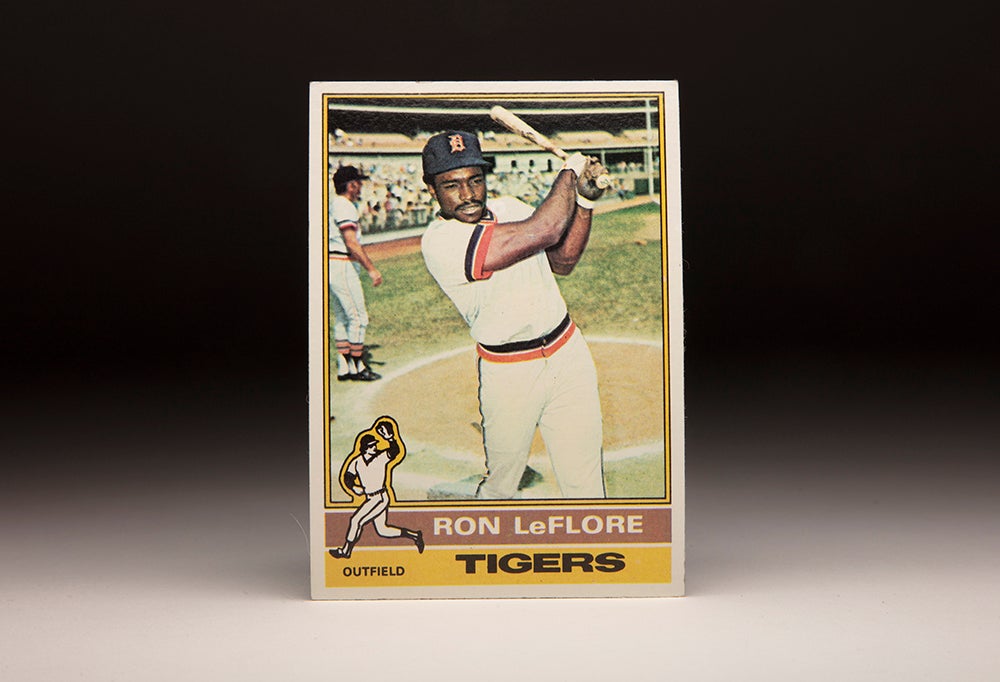
#CardCorner: 1976 Topps Ron LeFlore
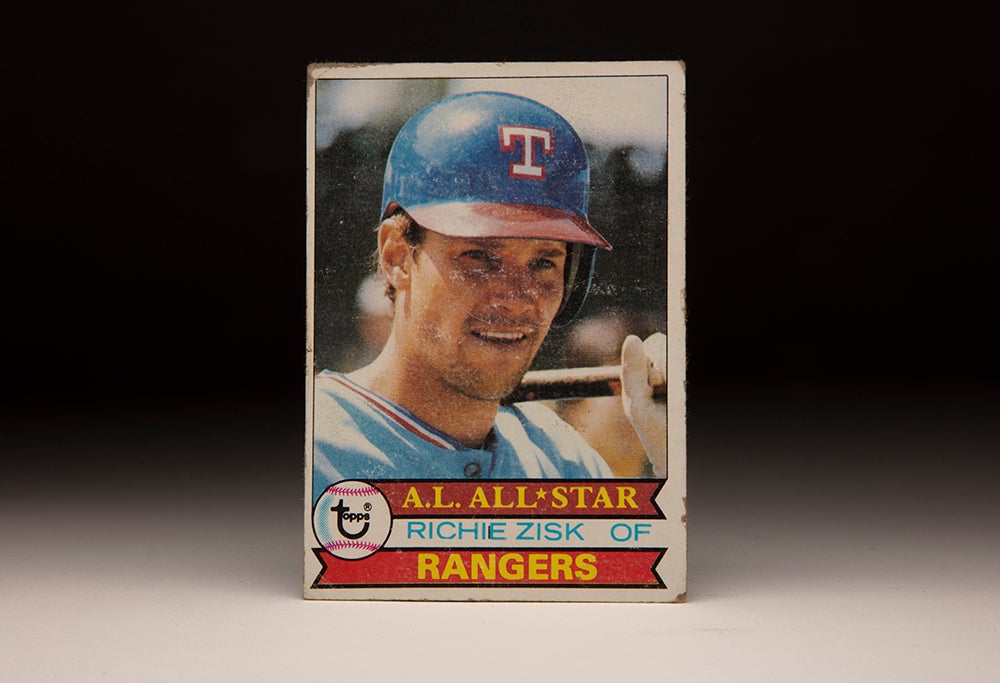
#CardCorner: 1979 Topps Richie Zisk
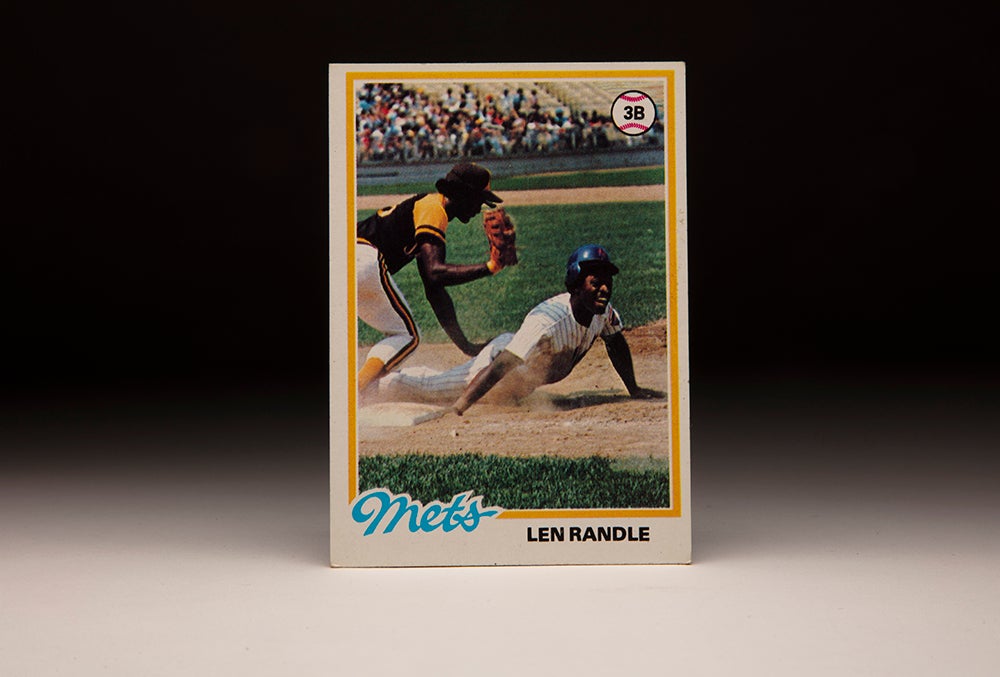
#CardCorner: 1978 Topps Lenny Randle
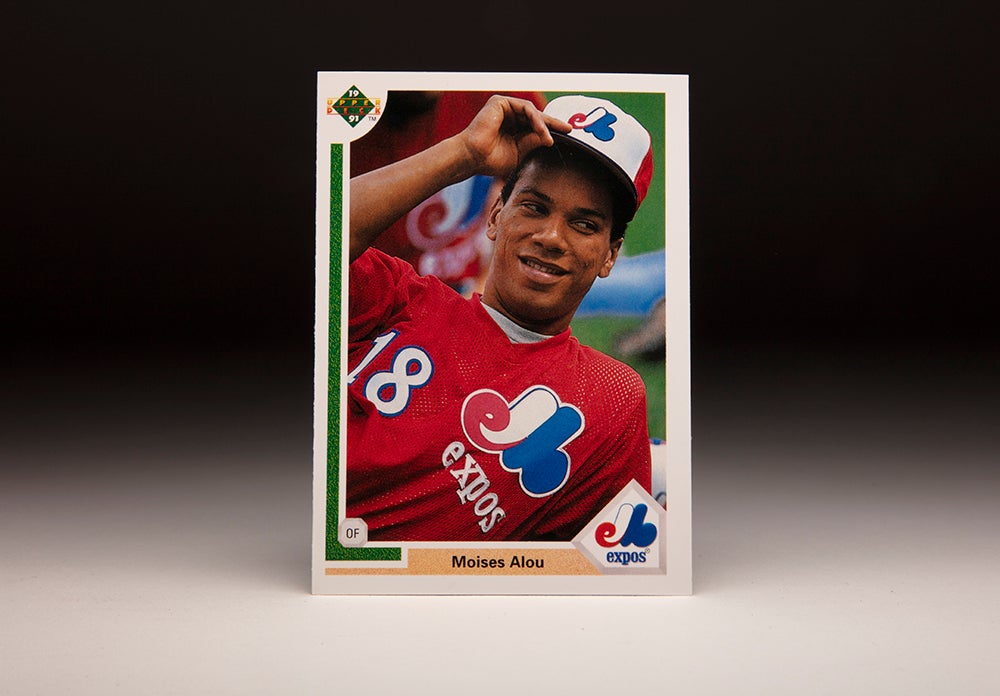
#CardCorner: 1991 Upper Deck Moises Alou

#CardCorner: 1976 Topps Ron LeFlore

#CardCorner: 1979 Topps Richie Zisk

#CardCorner: 1978 Topps Lenny Randle



